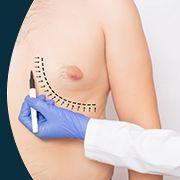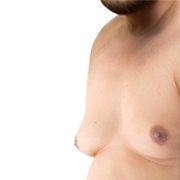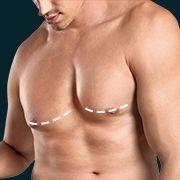What to Expect Before, During, and After Lipoma Removal
In This Article
What to Expect Before, During, and After Lipoma Removal
Ruban
Updated on April 26, 2024
Medically verified by Dr. Arya
Fact checked by Dr. Pournami

Cosmetic
10 min read
Have you felt a delicate, moveable mass underneath your skin?
It may well be a lipoma, which may be a kind of greasy tumour.
Whereas lipomas are ordinarily secure, a few people prefer to have them evacuated for corrective or torment reasons.
Lipoma evacuation surgery may be a visit surgery for expelling generous greasy tumours underneath the skin.
Mykare Health will walk you through the method, counting what to anticipate some time recently, amid, and after lipoma evacuation surgery.
What is a Lipoma?
Lipomas and blisters aren’t regularly perilous, but they can cause torment and make those who have them feel self-conscious.
These knots, which ordinarily happen on the confront, armpits, neck, back, or chest, are comparative in numerous ways, but sores are fluid-filled, and lipomas comprise of greasy tissue.
Lipoma Removal Types
-
A lipoma is often excised by a surgeon. This entails removing the lipoma using a scalpel. A lipoma can only be totally removed via excision.
-
A combination of liposuction and excision may be recommended by the specialist performing the treatment if the lipoma is very large or if you have multiple lipomas to remove. The doctor may use liposuction to remove some of the fat tissue and decrease lipomas larger than 4 centimetres in diameter. In certain situations, liposuction can reduce scarring and enhance the outcome of excision.
-
Laser lipolysis is an additional option for big or many lipomas. Here, fat cells are broken up with a laser and then removed.
How does the surgical process work?
Excision is the only procedure that may eliminate a lipoma entirely. It is the process of surgically removing a lipoma by making a skin incision. It is often carried out in a surgical theater or doctor's OPD.
Your surgeon will go over the preparation stages with you before performing the lipoma or cyst ectomy. These actions frequently entail:
-
Applying antibacterial soap to clean the treatment area
-
Avoiding shaving in the region under treatment
-
Not taking your blood pressure medicine with an ACE inhibitor the day of the procedure
-
Using just aspirin as a blood thinner for a predetermined amount of time
Nearly everyone is given local anaesthetic. Using local anaesthetic, a surgeon numbs the area surrounding the lump by injecting medication. If the lump is really big, an IV may be used to give you general anaesthetic or drowsiness.
While general anaesthesia puts you to sleep, sedatives are medications that promote relaxation.
Before the Procedure:
Although lipomas and cysts are removed in different ways, the treatments are often performed in an outpatient setting with minimal invasiveness.
Most patients just require local anaesthetic to numb the region being treated in either scenario. Nevertheless, if your lipoma or cyst is really large or located in a sensitive place, your doctor may suggest sedation.
Consultation:
Discuss your concerns and expectations with your doctor. They'll assess the lipoma, determine the best removal approach, and address any underlying conditions.
Medical History:
You have to share your medical history, allergies, medications, and any supplements you take with Surgeon.
Pre-operative Tests:
Depending on your health and the procedure type, blood tests or imaging studies might be needed.
Medications:
Your doctor might advise stopping certain medications that could interfere with clotting before surgery.
During the Procedure:
Anxiety and excitement can arise on the day of your lipoma removal procedure. You might feel less anxious and be ready for a seamless surgical experience if you know what to expect. Below is a detailed overview of what to anticipate:
Morning Preparations
-
Fasting: Depending on the sort of anaesthesia being utilised, you'll be prompted to quickly for a period of time earlier to surgery.
-
Individual Care: Utilise antibacterial cleansers to diminish the chance of sickness.
-
Clothing: Wear loose, comfortable clothing which will be promptly evacuated and will not press against the surgical location after the operation.
Lipoma removal is usually a simple procedure. Here’s a common thought of what you'll anticipate:
-
A local anaesthetic is infused around the knot to numb the zone.
-
Your doctor will make a cut in your skin over the lipoma.
-
They'll evacuate the lipoma and fasten the wound.
Your surgery will likely take less than an hour and conceivably less than half an hour.
Usually, the incision will be about the width of the lipoma. Your surgeon may also perform the squeeze technique. During this variation, the lipoma is pushed through a smaller incision. The squeeze technique can help minimise scarring, but it’s often ineffective for larger lipomas.
Type of Anesthesia: Lipoma removal regularly involves local anaesthesia to numb the zone around the lipoma, or general anaesthesia for more extensive procedures.
The Procedure Itself: The surgeon makes a small incision over the lipoma, carefully removes it, and stitches the wound closed. Depending on the size and location, the procedure can take anywhere from 15 minutes to an hour.
 9 min read
9 min readThe Advantages of Choosing Mykare Health for Gynecomastia Surgery
 6 min read
6 min readIdentifying The Ideal Age For Gynecomastia Surgery
 6 min read
6 min readPre and Post Gynecomastia Surgery: Essential Things to Know
Book Your Consultation Now
After the Procedure:
Post-Surgery Instructions
Immediate Aftercare: You’ll receive instructions on how to care for the incision, signs of infection to watch for, and pain management.
Discharge: Most lipoma removals are outpatient procedures, meaning you can go home the same day. Ensure you have someone to drive you home, as you may still be groggy from the anaesthesia
Setting the Stage for Recovery:
Rest: Once home, rest is paramount. Though you may feel fine, allowing your body to heal is crucial for a smooth recovery
Follow-Up: Pay attention to any scheduled follow-up appointments to have sutures removed or to check on the healing process
Dos and Don’ts during the First Week after Lipoma Removal
The first week after lipoma removal is a critical period for your recovery. Proper care and adherence to Surgeon’s instructions can significantly impact your healing process, comfort levels, and the final outcome of the surgery. Here are some dos and don’ts for the first week of recovery after lipoma removal:
| Do's | Don’ts |
|---|---|
| Follow Aftercare Instructions: Following your surgeon's instructions for post-operative care is crucial. Personalised for your unique circumstances, these guidelines are intended to promote the fastest possible recuperation. | Don’t Submerge the Wound: Until your surgeon gives the all-clear, stay out of baths, swimming pools, and any other activity that could submerge the incision site in water. Showering is generally acceptable, although it's best to avoid getting water directly on the wound. |
| Keep the Surgical Site Clean and Dry: In order to prevent infection, it is imperative that the incision site be kept clean. Observe the surgeon's instructions for wound care, including when and how to change the dressing. | Avoid Strenuous Activities and Heavy Lifting: Exercise can strain the healing incision, which may lead to its reopening or slow its healing process. Till your surgeon certifies that it is okay to restart, refrain from heavy lifting and other vigorous activity. |
| Take Prescribed Medications as Directed: Take prescription medications as instructed if you've been given painkillers to relieve discomfort or antibiotics to prevent infection. Avoid stopping antibiotics too soon, and take painkillers as needed. | Don’t Ignore Signs of Infection: Be vigilant for signs of infection, such as increased redness, swelling, warmth, or pus at the incision site, as well as fever. If you notice any of these signs, contact Anca’s team immediately |
| Rest and Elevate: Make sure you get enough sleep. Keep your extremities as elevated as you can to lessen swelling and encourage healing if your lipoma was removed from it. | Don’t Skip Pain Management: Managing your pain is important for your recovery. Skipping pain medication can make it difficult to move or rest comfortably, which is essential for healing |
| Stay Hydrated and Eat Nutritious Foods: Nutrition and hydration are essential for healing. To aid in the body's healing process, eat a balanced diet high in vitamins and minerals and drink lots of water. | Don’t Smoke: Smoking can significantly delay your healing process by reducing blood flow and oxygen to the wound site. If possible, avoid smoking before and after your surgery to facilitate better healing |
| Attend Follow-Up Appointments: During these consultations, surgeons can assess any concerns you may have, check on the status of your recovery, and remove sutures if needed. | Don’t Rush the Recovery Process: The body heals differently in each person. If your mending seems to be taking longer than you anticipated, don't rush it or give up. |
Following these dos and don’ts during the first week after lipoma removal surgery can help ensure a smooth and successful recovery. It’s important to remember that this period sets the foundation for the healing process.
Complications That Can Occur During Recovery after Lipoma Removal
Although lipoma excision is a simple and safe surgery, it is possible for difficulties to arise during the recovery period, just like with any surgical procedure.
Reduce their influence and stop more significant complications by being aware of these problems and detecting them early:
Infection
After any surgery, infection is one of the foremost visit side impacts. Side effects may incorporate fever, release, redness, edema, and warmth at the location of the cut. Appropriate wound care and taking after medicine medicate regimens are illustrations of preventive approaches.
Seroma
A seroma may be a straightforward liquid stash that can every so often shape underneath the skin near to the surgical location. In spite of the fact that seromas more often than not go absent on their own, if they get enormous or obnoxious, seepage might be vital.
Hematoma
A haematoma is a collection of blood exterior of blood vessels that can happen when surgery harms a blood vessel. Bigger haematomas may require depleting to dodge weight and distress, but littler ones may mend on their possess.
Damage
After any surgical incision, scarring is an inevitable part of the healing process. Scar appearance varies greatly from person to person. Talk to Anca about scar care methods, such as applying silicone gels or sheets and massaging the area once the lesion has healed.
Numbness or Changes in sensation :
There's a risk of a transitory misfortune of feeling or modifications in sensation close to the cut location as a result of nerve harm or disturbance amid surgery. These side effects more often than not progress over time, but in a few cases, they can wait inconclusively.
Incidence of the Lipoma Again:
A lipoma may occasionally reappear in the same location, especially if the excision was minimal. Frequent follow-up visits can help discover recurrences early on.
Allergic reactions:
Unfavourably susceptible responses might happen with sutures, dressings, or medicine drugs. Side effects may incorporate swelling, irritation, or redness. On the off chance that you take note of any side effects of an unfavorably susceptible response, contact your healthcare professional.
Being mindful of these potential complications and knowing what signs to explore for can assist you take proactive steps ought to ensure any issues emerge.
FAQs:
1. What happens before surgery?
Consultation: Discuss the lipoma and your concerns with your doctor.
Pre-operative tests: Blood tests or imaging studies might be needed.
Medication adjustments: Certain medications may need to be stopped beforehand.
2. What is the procedure like?
Anesthesia: Local anesthesia (desensitizing the area) or general anesthesia (you'll be snoozing) can be utilized depending on the lipoma size and area.
The removal process: The surgeon makes a cut, evacuates the lipoma, and fastens the wound closed.
3. What about recovery?
Pain management: Medication will be endorsed to oversee inconvenience.
Wound care: You'll receive instructions on caring for the incision site.
Activity restrictions: Strenuous activity might be limited for a while.
Follow-up appointments: Stitches might be removed in a week or two.
4. Are lipomas cancerous?
A lipoma is an abundance of fat cells that clump together to create a knot. Lipomas are generous and non-cancerous.
5. Who does lipoma removal?
Lipoma removal is usually carried out by a Dermatologist but may also be carried out by others with training in skin surgery procedures.
Lipoma extraction may be a secure and effective surgery for generous tumors.
Pre-operative meeting is fundamental for examining the strategy, dangers, and recuperation desires.
The type of anaesthetic and surgical complexity are determined by the lipoma's features.
Pain management, wound care, and activity limits are common aspects of recovery.
Close follow-up with your doctor is critical for maximum recovery.



